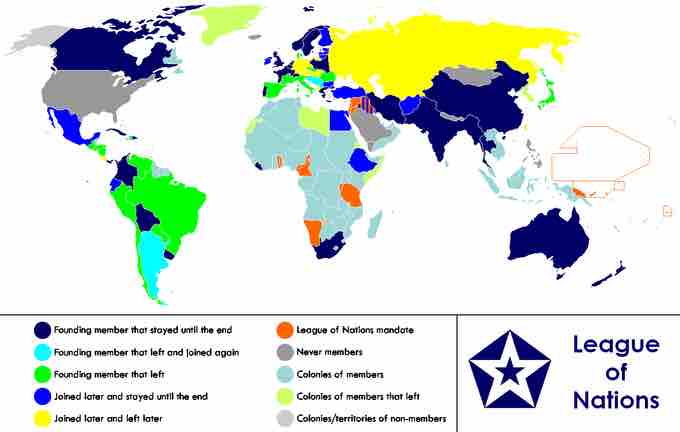An Early Attempt at International Organization
The League of Nations was an intergovernmental organization founded as a result of the Paris Peace Talks that ended the First World War. The form and ideals were drawn to some extent from US President Woodrow Wilson's 14 Points. The League was the first permanent international organization whose principal mission was to maintain world peace. Its primary goals, as stated in its Covenant, included preventing wars through collective security and disarmament, and settling international disputes through negotiation and arbitration. Other issues in this and related treaties included labor conditions, just treatment of native inhabitants, human and drug trafficking, arms trade, global health, prisoners of war, and protection of minorities in Europe. At the height of its development, from 28 September 1934 to 23 February 1935, it had 58 member nations.

Map of League of Nations
The countries on the map represent those that have been involved with the League of Nations.
A Lack of Leverage
The diplomatic philosophy behind the League represented a fundamental shift from the preceding hundred years. The League lacked its own armed force, and depended on the Great powers to enforce its resolutions, keep to its economic sanctions, or provide an army when needed. However, the Great Powers were often reluctant to do so. Sanctions could hurt League members, so they were reluctant to comply with them.
Failure of the League
After a number of notable successes and some early failures in the 1920s, the League ultimately proved incapable of preventing aggression by the Axis powers. In the 1930s, Germany withdrew from the League, as did Japan, Italy, Spain, and others. The onset of World War II showed that the League had failed its primary purpose, which was to prevent any future world war. The United Nations (UN) replaced it after the end of the war and inherited a number of agencies and organizations founded by the League.